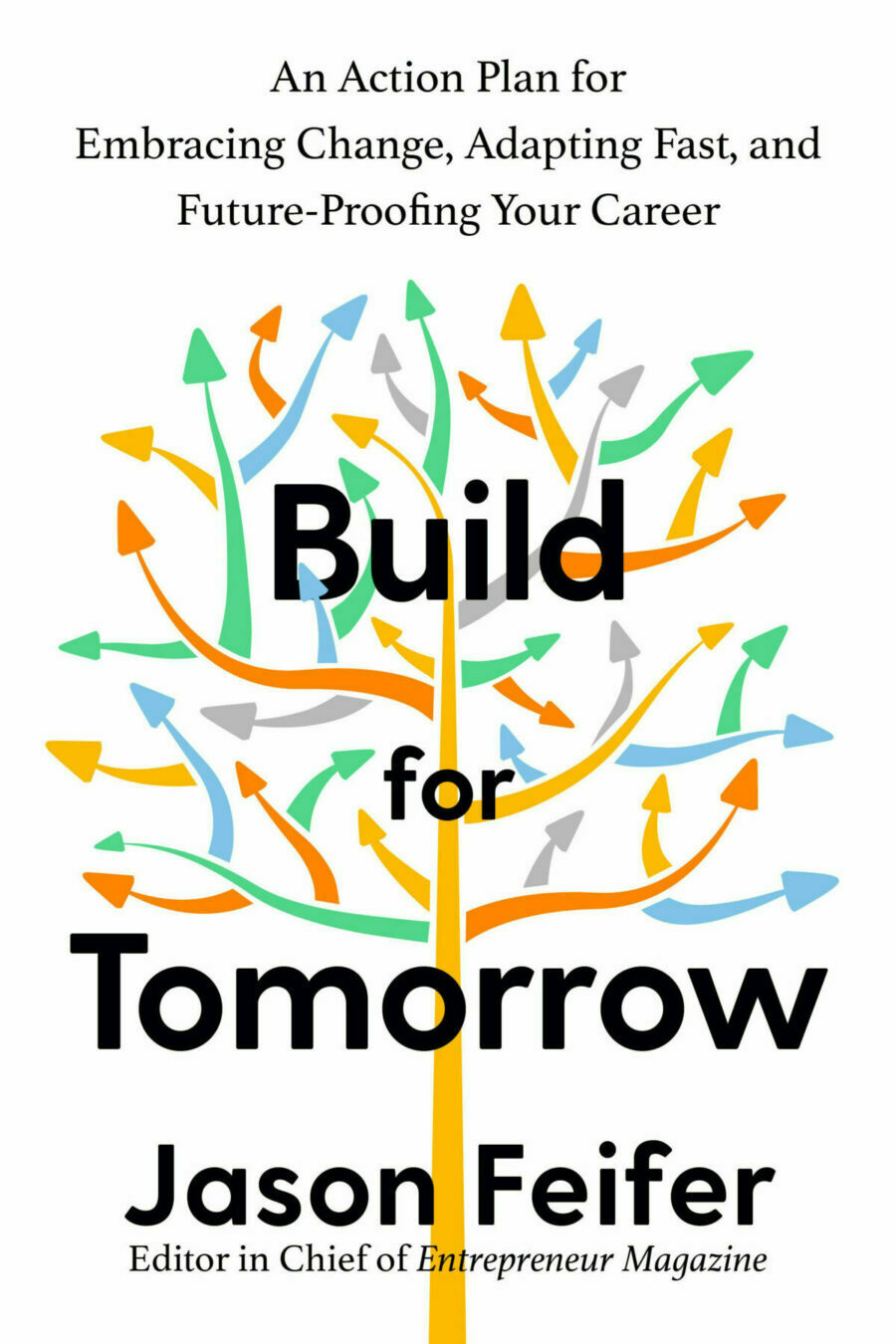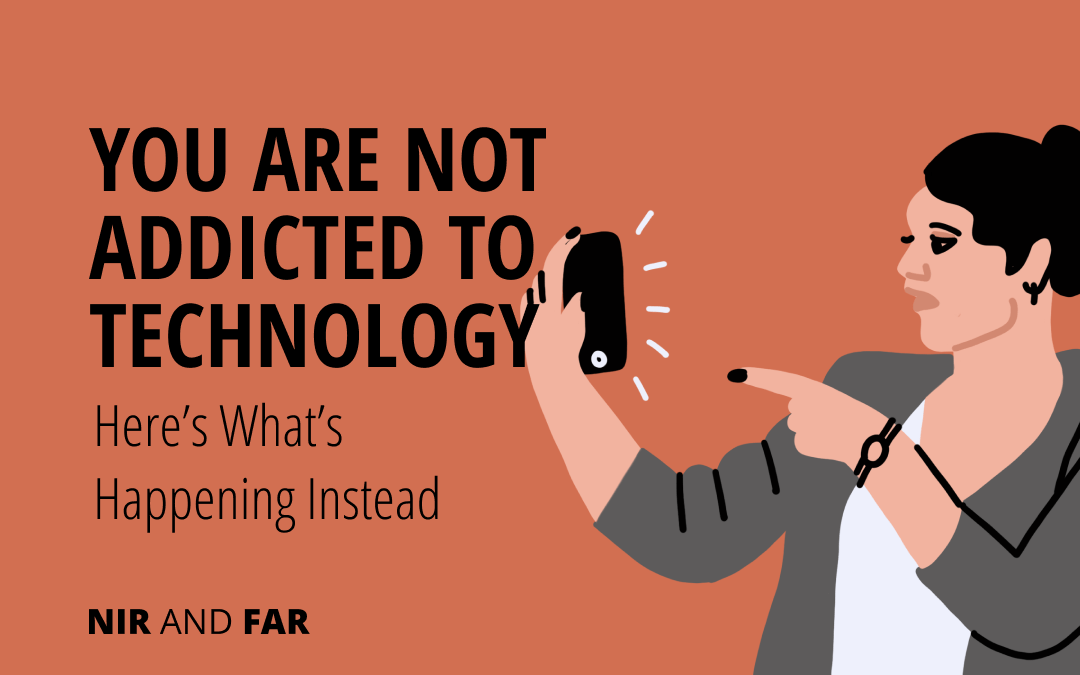This essay is adapted from the book Build For Tomorrow, in which Entrepreneur magazine editor in chief Jason Feifer shows how to thrive by harnessing the power of change.
Are You Addicted to Technology?
The loudest voices in our culture today say yes. During a conversation about technology on his mega-popular podcast, Joe Rogan said, “We’ve got a real addiction problem in this country.” In a congressional hearing in 2021, U.S. representative Kathy Castor of Florida said that apps are “designed to be addictive.” During his 2020 presidential campaign run, Andrew Yang said, “Our kids unfortunately are getting addicted to smartphones.”
Examples are endless. The words technology and addiction have become linked, such that you probably haven’t stopped to consider whether that’s true. Don’t we all check our email too much, after all? Isn’t that addiction?
What Do Researchers Think?
To begin to appreciate this, it’s helpful to talk to addiction researchers. That’s what I did, and I heard something very different from the likes of Rogan and Yang. “A lot of the time, these concerns about things like internet use or social media use haven’t come from the psychiatric community, as much as they’ve come from people who are concerned about technology use,” said Liam Satchell, a senior lecturer in psychology at the University of Winchester in the United Kingdom, who specializes in methodology and mental health.
Satchell, like many of his peers, is alarmed at how the word addiction is used by people who have no background in mental health. There is no scientific consensus on whether technology “addiction” exists, or if it does, how to identify and evaluate it. Studies have come out claiming that broad swaths of people are addicted to technology, like one recently that said as many as 34% of college students are addicted to social media, but Satchell investigated the methodology of these studies and found them to be borderline nonsense. Researchers are just taking a standard set of questions used to evaluate substance abuse—like, for example, “How many times a day do you drink alcohol?”—and then swapping out some language, so that the question might become, “How many times a day do you check social media?”
This overlooks too many other factors, Satchell says. For example, the hallmark of any mental health condition, including addiction, is that it negatively impacts your social, occupational, or family life—but how do we account for the fact that much of our social, occupational, or family life takes place on the internet?
Do people overuse technology? Of course. But that’s entirely different from addiction, and this isn’t just a matter of semantics. Satchell and his peers say that by misusing the word addiction—by pathologizing a common behavior—we risk significantly impacting the way people are treated. For example, I spoke with Joel Billieux, a professor of clinical psychology at the Universite´ de Lausanne in Switzerland, who also works in the hospital system there. He often works with patients whose gaming usage appeared to be an addiction—but instead of focusing on the gaming itself, he’s focused on what’s underneath it. Some patients are often suffering from trauma or depression. When that’s addressed, the gaming subsides. In such cases, the gaming was the patient’s way of coping with a larger problem. But if someone were to believe that overuse of gaming was an addiction, and therefore the problem in and of itself, then they’d miss these other issues and possibly compromise the treatment of these patients.

The Story We Tell Ourselves
Here’s the reason I share this with you. The story of tech addiction is not simply one about fears of technology, or a confusion between overuse and something more pathological. The story of tech addiction is a story we tell all too often, whenever change comes to us. And it goes like this:
Something is happening to me.
We tell large and small versions of this story. We tell personal and societal versions of this story. My job has changed. My neighborhood has changed. My relationship has changed. In each case, something else that is outside our control has gained total agency over the decisions we make and the world we live in.
This is a terrible story. It’s a harmful story! That’s because when you hear or tell this story repeatedly—something is happening to me—you create what psychologists call “learned helplessness.” I first heard that phrase from Nir Eyal, a best-selling writer who specializes in what he calls “behavioral design,” and whose books Hooked and Indistractable examine how to capture other people’s attention and how to protect your own. Eyal hates the narrative about tech addiction because he believes it trains people to give up. If tech is “addictive,” after all, how can we have any power? We are addicted! We must need someone else to help us!
“But when you call it what it really is—a distraction or overuse—then, Oh no, well now I can do something about it,” Eyal told me. “But that’s no fun. Now I actually have to change my behavior as opposed to just shaking my fist and hoping the politicians and the companies will do something about it.”
Eyal gave me an example: Why would a child spend all day playing video games? Is it because they’re addicted?
That answer is too simple.
In the mid-1980s, psychologists Edward Deci and Richard Ryan developed what they call the “self-determination theory” of motivation. It identifies three innate human needs— competency, autonomy, and relatedness. We need these things to feel happy and in control, and students rarely have access to them. A classroom can make kids feel incompetent; the endless rules of school and childhood sap them of autonomy; and the constant overscheduling of kids’ lives can inhibit their ability to relate with peers on their own terms. So what do they do? They find autonomy, competency, and relatedness in a video game instead, where they can master the virtual world, do it on their own terms, and connect with their friends.
Therefore, if a parent wants to solve the complex problem of video game overuse, they cannot focus solely on the gaming itself. They must create an environment where their kid has more control over their lives.
Reclaiming Control
As adults, of course, we do have more control over our lives. Things do not only happen to us. And as Eyal told me the example of kids and video games, I flashed back to a time when I seemingly struggled with an addiction of my own: I was hooked on Twitter. I checked Twitter every few minutes at work, and then carried that habit home with me, which aggravated my wife. But now that I’m thinking about those three psychological needs—autonomy, competency, and relatedness— I’m realizing how little of them I had back then. The company I worked for at the time had strange and burdensome policies, like making everyone switch desks every few months, which stripped me of my sense of autonomy. My bosses could never agree on what they wanted, which meant they were impossible to please, which killed my sense of competency. And because I was so sour, I felt disconnected from most of my coworkers— which meant no relatedness. What did I do as a result? I found all those things on Twitter, where I felt in control, confident, and connected to a community.
Then . . . change came to me. I was fired. My boss decided (reasonably!) that I wasn’t performing well and wasn’t fitting in with the office culture. I was embarrassed about this at first, but then realized how freeing it was. I started doing work I loved, on my own terms, and I connected with others who had a similar passion. In turn, my Twitter use dwindled to near- nothingness. I put that energy toward more constructive pursuits. And the crazy part is, I could have started all that progress much earlier. I could have quit that job. I could have walked out anytime! But I did not, because I felt helpless, and feeling helpless leads to no action.
Things do not just happen to us. There is always something that we can control. We will experience change, but we can also be the instigator of change.
We can be the thing that happens.
This essay was adapted from the book Build For Tomorrow, in which Entrepreneur magazine editor in chief Jason Feifer shows how to thrive by harnessing the power of change.
Copyright © 2022 by Jason Feifer. Used by permission of Harmony Books, an imprint of Random House, a division of Penguin Random House LLC, New York. All rights reserved. No part of this excerpt may be reproduced or reprinted without permission in writing from the publisher.
Free Distraction Tracker
Reclaim control of your attention today.
Your email address is safe. I don't do the spam thing. Unsubscribe anytime. Privacy Policy.

Related Articles
- Schedule Maker: a Google Sheet to Plan Your Week
- Cancel the New York Times? Good Luck Battling “Dark Patterns”
- How to Start a Career in Behavioral Design
- A Free Course on User Behavior
- User Investment: Make Your Users Do the Work
- Variable Rewards: Want To Hook Users? Drive Them Crazy
- The Hooked Model: How to Manufacture Desire in 4 Steps

